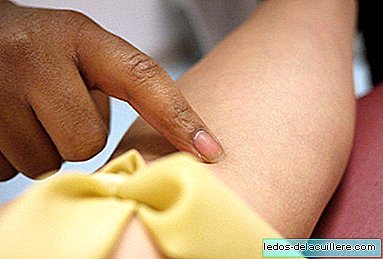
A few days ago we commented on some of the best known pregnancy tests as one of the most annoying or worst tolerated by many pregnant women: the O'Sullivan test. As we explain, it is a test whose purpose is to rule out the presence of gestational diabetes but that, by itself, is insufficient to diagnose the disease.
For this reason, if the O'Sullivan is altered, if the result is equal to or greater than 140 mg / dl of blood glucose, the woman must have a new blood test that we all know as the glucose curvewhose real name is Oral Glucose Tolerance Test (TTOG).
How is it done
The glucose curve It is a more annoying test than the O'Sullivan Test because it must be done after a fast of about 10-12 hours, because the woman has to make a special diet the three days before the test, because she must take concentrated glucose again, but this time more, because it will take 100 g of glucose when the other test was 50 and because blood is taken four times: when arriving (fasting), 60 minutes after taking glucose, at 120 minutes and at 180 minutes. Three hours in which the woman must remain seated (and without smoking).
A preparatory diet?
For three days it is recommended to make a diet relatively rich in carbohydrates. Normally the diet is delivered so that it can be done well, but if a woman does not make restrictions on carbohydrates in her diet she may not have to change anything. To give you an idea of the recommended diet, it is a 2,100-calorie diet consisting of 265 g of carbohydrates, 125 g of protein and 60 g of fat.
For breakfast, for example, a glass of skim milk with a small sandwich of cheese or ham (40 grams of bread and 25 g of ham or cheese) is recommended. In the middle of the morning a piece of fruit (200 g of orange, 200 g of pear or 160 g of apple). Then, to eat, a plate of salad accompanied by a plate of beans with potatoes (200 g of beans or spinach or carrot with 130 g of boiled potato or 130 g of rice), a couple of slices of bread (20 g of bread), a couple of medium fillets of skinless chicken, fish or veal (150 g of chicken, 150 g of fish or 150 g of veal) and a fruit (200 g of orange, 200 g of pear or 160 g of apple ).
Then, for a snack, a glass of milk or two skimmed yogurts and another fruit (200 g of orange, 200 g of pear or 160 g of apple) and a dinner just like the meal. Before sleeping, they also recommend a glass of milk with two cookies (or 20 g of bread).
As you can see, it is a fairly complete diet, with enough calories and hydrates so that the body has to activate to collect glucose and store it (by the action of insulin). After 3 days 10-12 hours of fasting and then the test.
TTOG assessment
The limit results of the test are given according to each blood test:
- At 0 'should give a maximum of 105 mg / dl.
- At 60 'it should give a maximum of 190 mg / dl.
- At 120 'it should give a maximum of 165 mg / dl.
- At 180 'it should give a maximum of 145 mg / dl.
How to classify the results
Once the results are seen and evaluated, professionals consider the test to be normal if all the values are below the established limits. If so, nothing special is done and done a new O'Sullivan Test in the following quarter.
In case only one of the values is affected, when matching or exceeding one of the limits, the glucose curve is repeated at 3 weeks, without doing a O'Sullivan beforehand.
Yes two or more values appear equal or higher at the limit values it is considered that the woman suffers from gestational diabetes and the woman is referred to the professional (or the unit) who is in charge of controlling the evolution of diabetes during pregnancy, where they will see which is the best treatment according to the test values and subsequent controls, since it can be a treatment only with diet, with diet and oral medication or with diet and insulin.
No alternative?
The other day, when explaining the O'Sullivan Test, I commented that there were possible alternatives when the woman who should take the glucose preparation tolerates it fatally. A good breakfast full of carbohydrates or a bag of candies, as one reader commented, could be possible solutions. Even in cases like that the analytics could be done in the afternoon, when morning sickness no longer bothers and the preparation could be better tolerated (it is done in the morning by the usual organization of the laboratories, but the time of day when the test is done is indifferent).
As well, for the glucose curve there is no agreed alternative either (Sure there is, but there is a need to study how to do it without the preparation). In addition, if it is already difficult for you to do it differently with the O'Sullivan, which does not diagnose gestational diabetes, imagine how complicated it can be to perform a three-hour test without the certainty that the values are adequate for having Ingested something else. What could be done is to do the analysis at another time of the day. The trouble is that as many hours of fasting are required, the woman would have to spend most of the day without eating (or having a drink at 5 in the morning for example to be punctured in the afternoon).












